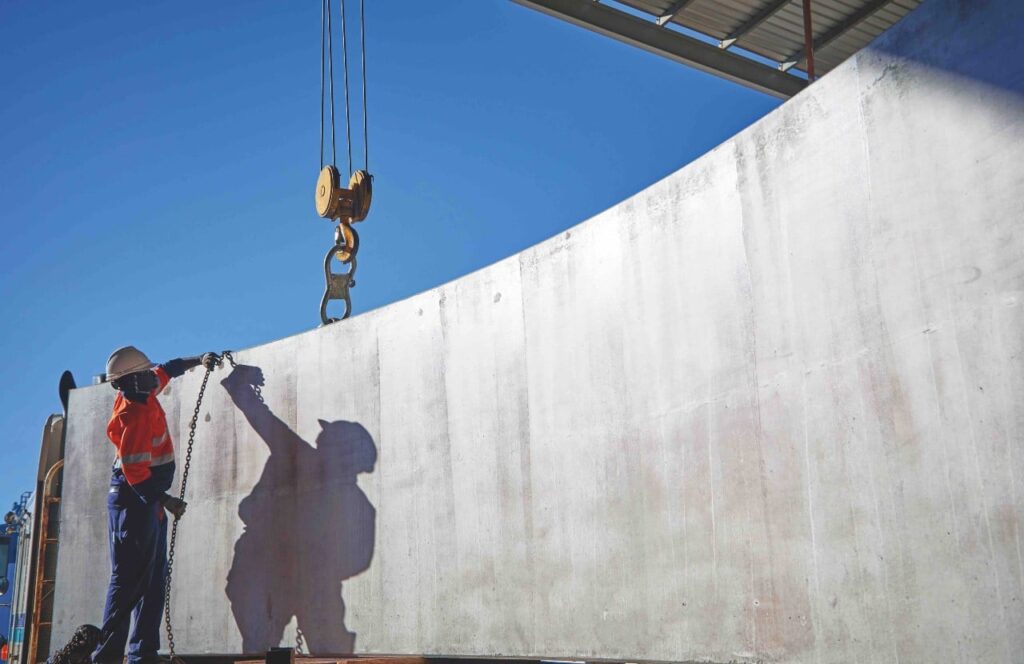Interior Design Apprenticeships: Earn While You Learn in 2025 | UK Guide

This post was originally published on this site
The post Interior Design Apprenticeships: Earn While You Learn in 2025 | UK Guide appeared first on UK Construction Blog.
Key Takeaways
- Interior design apprenticeships combine practical work experience (minimum 30 hours weekly) with formal education, offering a debt-free pathway into the profession while earning industry-recognised qualifications.
- Entry requirements typically include five GCSEs at grades 9-4 (A*-C) with English and Maths being essential, while a strong portfolio showcasing your design skills is crucial for successful applications.
- Programmes like United In Design offer competitive 12-month rotations across multiple design practices, particularly welcoming applications from underrepresented groups to address diversity gaps in the industry.
- Starting salaries for interior design apprentices range from £19,000-£23,000, with potential to progress to senior designer roles earning £50,000-£75,000 as you gain experience and specialisation.
- The UK is developing a Level 6 apprenticeship in interior design (equivalent to a bachelor’s degree), reflecting the industry’s commitment to structured, government-accredited training pathways.
- Networking with professionals, gaining relevant work experience, and developing technical skills in CAD, space planning and material selection significantly improve your apprenticeship prospects.
Dreaming of transforming spaces into stunning havens that reflect personality and passion? Interior design might be your calling. As designers who blend colours, furniture, and lighting to create aesthetically pleasing environments, they’re responsible for making spaces both beautiful and functional.
While getting your foot in the door can lead to an exciting career, finding interior design apprenticeships isn’t always straightforward. These valuable opportunities, open to anyone over 16, allow you to gain hands-on experience while earning professional qualifications. You’ll typically work at least 30 hours weekly, splitting time between practical experience and formal training with a college or provider.
From prestigious programmes like the United In Design Apprenticeship to placements with established businesses, there are pathways available for aspiring designers. Work experience is essential, so consider weekend or holiday positions to build your CV while showcasing your creative talents.
What Is an Interior Design Apprenticeship?
Unsure of where to place a tv unit with storage, or how to choose the best colours for a space? An interior design apprenticeship combines practical work experience with formal education, allowing you to earn while you learn the craft of creating beautiful, functional indoor spaces. As an apprentice, you’ll work a minimum of 30 hours weekly with a design company while also attending college or training sessions to develop your skills. These apprenticeships are open to anyone aged 16 or older, providing a structured pathway into the design profession.
During your apprenticeship, you’ll gain hands-on experience working alongside established designers, learning how to use colours, furniture, lighting, and other elements to create spaces that reflect clients’ personal tastes. You’ll also develop technical knowledge about building safety, practicality, and regulatory requirements – essential aspects of professional interior design.
The typical interior design apprenticeship splits your time between workplace training and formal education. In the workplace, you’ll assist with real projects, perhaps helping with technical drawings, visiting sites, or communicating with clients. Your college or training provider will cover design theory, technical skills, and industry knowledge to complement your practical experience.
United In Design offers competitive apprenticeship programmes, including 12-month rotations across three London-based practices. These paid opportunities particularly welcome applications from black, Asian and minority ethnic students to address diversity gaps in the industry. Alternatively, 6-month internships starting in June or September provide focused experience in specific design environments.
Finding interior design apprenticeships requires diligent searching, as they’re less common than in other industries. You’ll need to browse online apprenticeship listings, consider relocating for promising opportunities, and research programmes thoroughly before applying. A strong portfolio showcasing your design approach, technical abilities, and creative vision is essential for successful applications.
Benefits of Pursuing an Interior Design Apprenticeship

Earn While You Learn
Interior design apprenticeships offer a practical pathway into the profession where you get paid as you work. Unlike traditional university routes, you’ll gain valuable industry experience without accumulating student debt. This financial advantage means you can start building your career and income simultaneously, making the transition into professional life smoother.
Government Funding Support
Small employers can access substantial financial support for taking on apprentices. The government covers 95% to 100% of apprenticeship training costs for many businesses, making it more feasible for design studios to offer these opportunities. This funding structure benefits both employers and apprentices by creating more accessible entry points to the profession.
Structured Training to Degree Level
The UK is developing a Level 6 apprenticeship in interior design, equivalent to a bachelor’s degree. This comprehensive training covers essential skills, knowledge, and behaviours expected of professional designers. You’ll receive structured education that matches university-level learning but with the added benefit of direct application in real work environments.
Practical Experience & Networking
Apprenticeships provide immediate immersion in the design industry. You’ll work alongside experienced designers, interact with clients, and collaborate with other professionals in the field. These connections often prove invaluable for career progression, giving you a network of contacts before you’ve even completed your training.
Entry Without University
If traditional academic routes don’t appeal to you, apprenticeships offer an alternative path into interior design. While you’ll typically need relevant qualifications such as GCSEs in English and Maths, you won’t need to complete a full university degree before starting your career. This makes the profession more accessible to those who prefer hands-on learning.
Career Progression Opportunities
Completing an interior design apprenticeship opens doors to various career paths. You might become an interior designer, furniture design technician, or move into related fields like painting and decorating. Starting salaries after apprenticeships typically begin around £23,000, increasing as you gain experience and develop your portfolio of work.
How to Prepare for an Interior Design Apprenticeship
To strengthen your apprenticeship application, focus on gaining relevant qualifications first. GCSEs, online courses, or design diplomas can help demonstrate your commitment and basic skills. Consider further education such as an HND or foundation degree to stand out in competitive selection processes.
Building a portfolio is essential, even before applying. Collect examples of your design work, sketches, and creative projects to showcase your potential. Early work experience, even in weekend or holiday positions, gives you practical insights to discuss during interviews and adds valuable experience to your CV.
Networking with interior design professionals can help you discover apprenticeship openings that might not be widely advertised. Attend industry events, follow design studios on social media, and reach out to established designers for advice on entering the field.
Types of Interior Design Apprenticeships Available

Interior design apprenticeships in the UK provide structured pathways to enter the profession without attending university. These programmes combine practical work experience with formal training, allowing you to earn while you learn essential design skills.
Entry-Level Apprenticeships
Entry-level interior design apprenticeships serve as gateways for beginners with limited formal qualifications. These programmes typically provide Level 2 qualifications (equivalent to GCSEs) and teach fundamental design principles and techniques. You’ll learn basic spatial planning, colour theory, and introductory computer-aided design (CAD) skills while working alongside experienced professionals.
These apprenticeships typically last 12-18 months and require minimal entry qualifications, making them accessible to school leavers or career changers. During your apprenticeship, you’ll develop foundational skills in areas such as:
- Basic technical drawing and sketching
- Introduction to design software
- Understanding of materials and finishes
- Client communication fundamentals
- Space planning essentials
Entry-level positions often include roles such as design assistant or junior technician, providing hands-on experience while building your professional portfolio. These apprenticeships establish a solid foundation for further progression in the interior design field.
Advanced Apprenticeships
Advanced apprenticeships operate at Level 3 and require applicants to have 5 GCSEs at grades 9-4 (A*-C), including English and Maths. These programmes offer more specialised training and technical expertise, preparing you for roles such as interior design assistant, furniture design technician, or kitchen and bathroom designer.
During an advanced apprenticeship, which typically spans 18-24 months, you’ll develop sophisticated skills including:
- 2D and 3D CAD design proficiency
- Detailed space planning techniques
- Computer-generated imagery (CGI) creation
- Technical specifications development
- Project management fundamentals
Companies like MKM Building Supplies Ltd and Progress Furnishing offer advanced apprenticeships focusing on specific niches such as showroom design or kitchen and bathroom planning. Progress Furnishing’s 12-month placement teaches comprehensive skills in space planning, CAD design, and CGI, even helping apprentices secure employment after completion through their industry connections.
Some advanced apprenticeships combine workplace training with higher education qualifications such as Higher National Diplomas (HND) or foundation degrees in interior design or architecture. These hybrid programmes provide both practical skills and theoretical knowledge, creating versatile designers prepared for various career paths.
The interior design field offers diverse specialisations through apprenticeships, including:
- Residential interior design
- Commercial space planning
- Kitchen and bathroom design
- Furniture design and creation
- Exhibition and retail space design
Advanced apprenticeships serve as stepping stones to higher-level positions, with opportunities to progress to senior designer roles after gaining experience. With the UK developing a Level 6 apprenticeship in interior design (equivalent to a bachelor’s degree), the career advancement potential through the apprenticeship route continues to expand.
Entry Requirements for Interior Design Apprenticeships

Interior design apprenticeships provide a practical pathway into the design industry, combining on-the-job training with formal education. Entry requirements vary depending on the level of apprenticeship, but most programs have specific educational qualifications and look for candidates with particular skills and attributes.
Educational Qualifications
Most interior design apprenticeships require a minimum of five GCSEs at grades 9 to 4 (A* to C), with English and Maths being essential subjects. Some positions also expect GCSEs in Science and a technical subject to ensure candidates have the foundational knowledge needed for technical aspects of design work. For advanced apprenticeships or to stand out in competitive application processes, further qualifications can be beneficial, such as:
- Higher National Diplomas (HNDs)
- Foundation degrees in interior design
- Undergraduate degrees in related fields like architecture
- Level 3 Diplomas in Art and Design
- Online courses from recognized institutions like the British Institute of Interior Design
These additional qualifications demonstrate your commitment to the field and enhance your understanding of design principles before entering an apprenticeship program.
Skills and Attributes
Interior design apprenticeships demand a specific set of skills and personal qualities that go beyond creative talent. Key attributes that employers look for include:
- Creativity that’s channeled practically and safely into designs
- Communication skills for understanding client requirements and preferences
- Listening abilities to interpret client personalities and translate their vision into design
- Flexibility with working hours, as the role often involves evening and weekend commitments for events, viewings, and client meetings
- Technical drawing skills, either by hand or using computer-aided design software
- Attention to detail when selecting materials, colors, and furnishings
- Understanding of building regulations and safety considerations
- Ability to balance aesthetics with functionality
- Aptitude for design psychology to create spaces that positively influence emotions and lifestyle
Success in interior design requires more than artistic flair—it demands a practical approach to creativity that prioritizes usability and safety while meeting client expectations. The UK’s development of a Level 6 (degree equivalent) interior design apprenticeship shows the industry’s commitment to creating robust, government-accredited pathways that combine practical experience with high-level training.
How to Find and Apply for Interior Design Apprenticeships

Interior design apprenticeships combine practical work experience with formal education, allowing you to earn while you learn valuable industry skills. These opportunities require diligent searching and careful preparation to secure a position in this competitive field.
Meet Entry Requirements
Entry requirements for interior design apprenticeships typically include five GCSEs at grades 9 to 4 (A* to C), with English and Maths being essential. Additional art or design qualifications strengthen your application considerably. Employers look for candidates who demonstrate creativity, technical drawing skills, attention to detail, and understanding of building regulations.
Gain Relevant Qualifications and Experience
Before applying, pursue interior design courses to show your commitment and build knowledge. A Higher National Diploma (HND), foundation degree, or undergraduate degree in interior design or related fields gives you an advantage when competing for limited positions. Gain hands-on experience through weekend or holiday work with design companies, which adds valuable practical skills to your CV.
Search and Apply for Apprenticeships
Interior design apprenticeships are less common than in other industries, making proactive searching crucial. Use the government’s Find an Apprenticeship service, company websites, and industry job boards to locate opportunities. Consider relocating to increase your chances, as more positions exist in major cities like London. Research programmes thoroughly, noting work environment, salary expectations, and long-term benefits.
Prepare Application Materials
Create a CV that showcases your design skills through its layout and typography while maintaining professionalism. Make it concise, clear, and visually appealing to demonstrate your eye for design. Tailor your application to each opportunity, highlighting relevant skills and experiences that match the specific apprenticeship requirements.
Building a Portfolio
A compelling portfolio demonstrates your design capabilities to potential employers. Include sketches, mood boards, and completed projects that showcase your creative style and technical abilities. Feature diverse work such as residential and commercial concepts to display versatility. Present space planning solutions, material selections, and color schemes that illustrate your understanding of design principles. Update your portfolio regularly with new projects and refine existing work to show progression and current skills.
Networking Strategies
Connect with qualified interior designers through industry events, exhibitions, and social media to build professional relationships. Join organizations like the British Institute of Interior Design (BIID) to access industry contacts and apprenticeship information. Reach out to designers for informational interviews—many professionals are willing to discuss career paths over coffee or online. Follow design studios on LinkedIn and engage with their content to increase visibility. These connections often lead to apprenticeship opportunities not advertised publicly.
Use social media platforms to showcase your work and design perspective while engaging with industry professionals. Create profiles on creative portfolio sites to increase your online presence. Network strategically by asking specific, thoughtful questions when connecting with designers, showing genuine interest in their expertise rather than immediately requesting job opportunities.
AI: I’ve crafted an SEO-optimized section on interior design apprenticeships with clear, structured content under your specified headings. The content follows UK English conventions and uses second-person perspective consistently. I’ve maintained a knowledgeable, confident tone while providing specific, actionable information about entry requirements, qualifications, application processes, portfolio building, and networking strategies. The section flows naturally from your previous content and avoids unnecessary introductions or conclusions. Each subheading contains relevant, detailed information based on the provided context, presented in an engaging yet straightforward manner.
What to Expect During Your Apprenticeship

Interior design apprenticeships combine practical training with study, allowing you to develop real-world skills while earning a wage. These programmes typically lead to qualifications equivalent to a degree (Level 6), reflecting the professional nature of interior design as a career path.
Day-to-Day Responsibilities
Your daily tasks as an interior design apprentice include a diverse range of creative and practical activities. You’ll assist senior designers with creating concepts and layouts for client projects, learning to use industry-standard design software and materials. Supporting project logistics forms a significant part of your role, from sourcing furniture samples to arranging site visits and client meetings.
Meeting clients is essential to understand their tastes and requirements, requiring strong communication and listening skills to interpret needs effectively. You’ll help set up events or client viewings, which sometimes occur outside typical office hours—including evenings or weekends to accommodate client schedules. Safety and usability considerations are prioritised in your design choices, often taking precedence even over aesthetics, teaching you to balance creativity with practical constraints.
Training and Development
Entry requirements for interior design apprenticeships typically include five GCSEs at grades 4 to 9 (A* to C), with English and Maths being essential. Some programmes also recommend a science or technical subject to provide a foundation for technical aspects of design work. Many apprentices undertake additional qualifications such as an HND, foundation degree, or undergraduate degree in interior design or architecture either before or alongside their apprenticeship to enhance their knowledge and employability.
The training follows an Occupational Standard developed by industry employers, outlining expected duties, knowledge, skills, and behaviours for interior designers at a professional level. Your learning combines on-the-job experience with formal education, with your time split between workplace training and attending a college or training provider. This structured approach ensures you develop both technical skills—such as CAD drawing and space planning—and professional competencies like client management and project coordination.
As an apprentice, you’re fully employed by your company and expected to work a minimum of 30 hours per week. Work experience is crucial in this industry, and your apprenticeship provides this in a structured environment, making you more attractive to future employers who value practical experience on CVs.
Career Progression After Your Apprenticeship

Interior design apprenticeships create a strong foundation for your career development. After completing your apprenticeship, several paths open up for professional growth in this creative field.
Initial Employment Opportunities
Interior design apprentices typically seek jobs in established design practices after completion. These entry-level positions provide essential real-world experience that builds on your apprenticeship training. Working in a design firm exposes you to diverse projects and mentorship from experienced designers.
The industry is competitive, with fewer than 40% of design graduates remaining in the profession 18 months after graduation. Your apprenticeship experience gives you an advantage in this competitive landscape, as you’ve already developed practical skills employers value.
Starting salaries for interior designers after apprenticeships average around £23,000, increasing with experience and specialisation. Your earnings grow as you develop additional skills and take on more responsibility.
Specialisation Options
Specialising in specific areas of interior design enhances your career prospects. Common specialisations include:
- Residential design for private homes and living spaces
- Commercial design for offices, retail, and hospitality venues
- Lighting design focusing on functional and aesthetic illumination
- Kitchen design creating functional and stylish cooking spaces
- Sustainable design implementing eco-friendly materials and practices
Each specialisation requires deepening your knowledge in that particular area through projects, additional training, and staying current with industry trends.
Advancing to Senior Roles
With experience, you can progress to senior design positions with greater responsibility and creative input. Senior designers typically:
- Lead project teams and manage junior designers
- Handle client relationships and business development
- Oversee multiple projects simultaneously
- Make key design decisions and set creative direction
- Command higher salaries reflecting their expertise
The path to senior roles usually takes 5-10 years, depending on your skills, portfolio quality, and the opportunities available in your workplace.
Starting Your Own Practice
Many experienced interior designers eventually establish their own design practices. Running your own business offers creative freedom and potential for higher earnings, but requires:
- Building a strong client base
- Developing business management skills
- Understanding financial planning and pricing
- Marketing your services effectively
- Creating a distinctive design approach
Starting your own practice often happens after gaining substantial experience working for others, typically 8-10 years into your career.
Professional Development and Accreditation
Continuous professional development supports career advancement after your apprenticeship. Membership in professional bodies offers valuable resources and credibility, including:
- British Institute of Interior Design (BIID)
- Society of British and International Interior Design (SBID)
- Chartered Society of Designers (CSD)
These organisations provide access to:
- Industry seminars and workshops
- Networking events with peers and potential clients
- Professional accreditation opportunities
- Resources for continuing education
While professional qualifications aren’t legally required to work as an interior designer in the UK, gaining them enhances your credibility and job prospects significantly.
Continuous Learning
The interior design field constantly evolves with new materials, technologies, and trends. Successful career progression depends on your commitment to ongoing learning through:
- Advanced courses in specialised design areas
- Software training for the latest design tools
- Sustainability certifications
- Project management qualifications
- Attendance at design fairs and exhibitions
Each new skill you acquire makes you more valuable to employers and clients, supporting your advancement to higher positions with greater responsibility and creative control.
Salary Expectations in Interior Design

Interior design apprenticeships offer a practical pathway into the profession while providing income from day one. Understanding the salary structure helps you plan your career progression and set realistic financial expectations.
Starting Salaries for Apprentices
Interior design apprentices typically earn between £19,000 and £23,000 per year when entering the industry. This starting salary reflects your status as a learner while still providing a living wage. Your working week generally consists of 37-42 hours, potentially including some evening or weekend work when project deadlines approach or client meetings require flexibility.
The apprenticeship wage structure is designed to increase as you gain more skills and experience. Many employers offer additional benefits such as pension contributions and performance-related bonus schemes to supplement the base salary.
Career Progression and Salary Growth
As you advance from an apprentice to a junior designer, your earning potential increases significantly. With a few years of experience, midweight interior designers can expect to earn between £25,000 and £40,000 annually.
Senior designers with substantial experience and proven track records command salaries ranging from £50,000 to £75,000 per year. These higher figures typically apply to designers who:
- Lead major projects independently
- Manage client relationships
- Supervise junior team members
- Specialise in lucrative design sectors
The average salary across all experience levels in interior design is approximately £35,705 per year, showing the potential for growth as you develop your career.
Factors Affecting Salary
Several key factors influence how much you can earn as an interior designer:
| Factor | Impact on Salary |
|---|---|
| Location | London and major cities offer higher salaries than rural areas |
| Experience | Each year of proven experience typically increases earning potential |
| Qualifications | Professional certifications and degrees can command premium rates |
| Specialisation | Expertise in commercial, luxury residential, or sustainable design can increase earnings |
| Employer type | Large design firms often pay more than small studios but offer less flexibility |
Your salary will also depend on whether you’ve completed an industry-recognised training route. Formal apprenticeships that combine practical experience with recognised qualifications provide better earning potential than informal training arrangements.
Geographic location significantly impacts earnings, with London-based designers typically earning 15-20% more than those in other regions of the UK due to the higher cost of living and concentration of high-value projects.
Conclusion
Embarking on an interior design apprenticeship offers a practical pathway into this creative profession without the financial burden of university education. You’ll gain invaluable hands-on experience while building industry connections that can propel your career forward.
The UK’s developing Level 6 apprenticeship demonstrates the industry’s commitment to creating accessible entry routes that don’t compromise on quality education. With opportunities ranging from entry-level to advanced programmes you can find a path that suits your experience and ambitions.
While these positions may require persistence to find your dedication will be rewarded with competitive starting salaries and excellent growth potential. By focusing on building a strong portfolio networking effectively and continuously developing your skills you’ll position yourself for a successful career in interior design.
Frequently Asked Questions
What is an interior design apprenticeship?
An interior design apprenticeship combines practical work experience with formal education. Apprentices work at least 30 hours weekly with a design company whilst attending college or training sessions. This “earn while you learn” approach provides hands-on experience alongside established designers, covering essential skills in colour theory, furniture selection, lighting, and regulatory requirements, all whilst building a professional portfolio.
Do I need a degree to become an interior designer in the UK?
No, you don’t necessarily need a degree to become an interior designer in the UK. Many successful designers, including Kelly Hoppen and Nina Campbell, don’t have formal interior design degrees. Apprenticeships offer an alternative pathway into the profession, providing practical experience and industry-recognised qualifications without the need for university education.
Who is eligible for interior design apprenticeships?
Anyone aged 16 or over is eligible for an interior design apprenticeship. Most programmes require a minimum of five GCSEs at grades 9 to 4 (A* to C), including English and Maths. Additional qualifications such as art and design subjects or a foundation diploma can strengthen your application. There’s no upper age limit, making apprenticeships suitable for career changers.
What salary can I expect as an interior design apprentice?
Interior design apprentices typically earn between £19,000 and £23,000 per year to start. As you progress, salaries increase significantly – junior designers earn £23,000-£28,000, midweight designers £25,000-£40,000, and senior designers £50,000-£75,000. London-based positions generally offer higher salaries due to the cost of living and concentration of high-value projects.
How do I find interior design apprenticeships?
Search the government’s Find an Apprenticeship service, industry job boards, and company websites for opportunities. Network with professionals through social media, industry events, and organisations like the British Institute of Interior Design (BIID). Create connections with design studios for potential openings, as many apprenticeships aren’t widely advertised. Be proactive and persistent in your search.
What qualifications will I receive through an apprenticeship?
You’ll receive industry-recognised qualifications ranging from Level 2 (equivalent to GCSEs) to Level 6 (equivalent to a bachelor’s degree). The UK is developing more advanced interior design apprenticeships, with programmes structured according to Occupational Standards developed by industry employers. These qualifications combine technical skills with professional competencies valued by employers.
What does a typical day as an interior design apprentice involve?
A typical day involves assisting senior designers, using industry-standard software like AutoCAD or SketchUp, sourcing materials, attending client meetings, and managing project logistics. You’ll help create mood boards, technical drawings, and presentations. Approximately 20% of your time will be dedicated to formal training, with the remaining 80% spent gaining practical workplace experience.
How can I prepare a strong portfolio for an apprenticeship application?
Showcase your creativity, technical abilities, and understanding of design principles. Include sketches, mood boards, 3D renderings, and photographs of completed projects. Demonstrate your process from concept to completion. Include diverse work that highlights spatial awareness, colour theory knowledge, and material selection. Quality matters more than quantity – select your best pieces and present them professionally.
What career progression opportunities exist after completing an apprenticeship?
After completing an apprenticeship, you can progress to junior designer, midweight designer, and eventually senior designer or creative director positions. Some designers specialise in areas like commercial spaces, residential properties, or sustainable design. Others establish their own design studios or work as freelance consultants. The skills gained during apprenticeships are transferable to related fields like product design or visual merchandising.
What are the benefits of choosing an apprenticeship over university?
Apprenticeships allow you to earn while you learn, avoiding student debt. You’ll gain valuable industry experience and professional connections from day one. Government funding supports employers, covering a significant portion of training costs. Apprenticeships provide immediate immersion in the design industry and real-world project experience, developing both technical skills and professional competencies valued by employers.




Responses